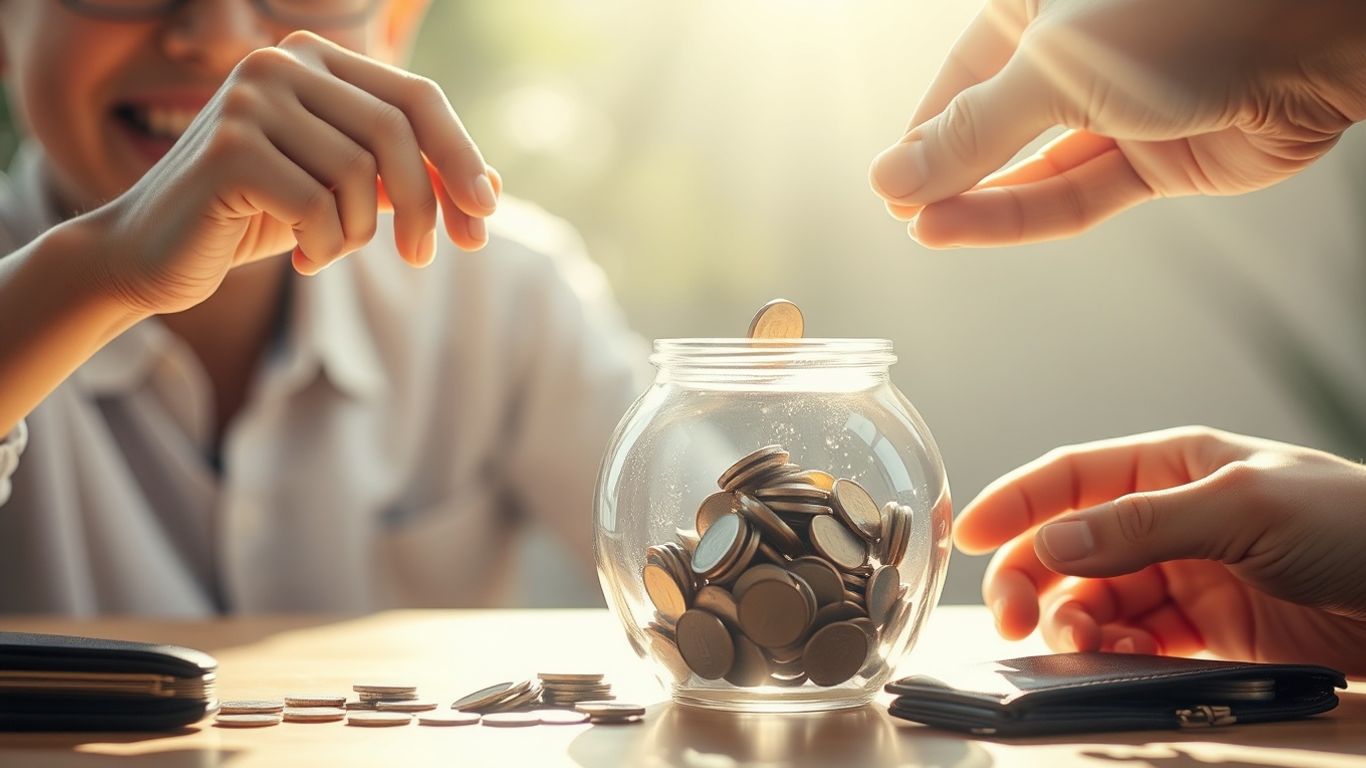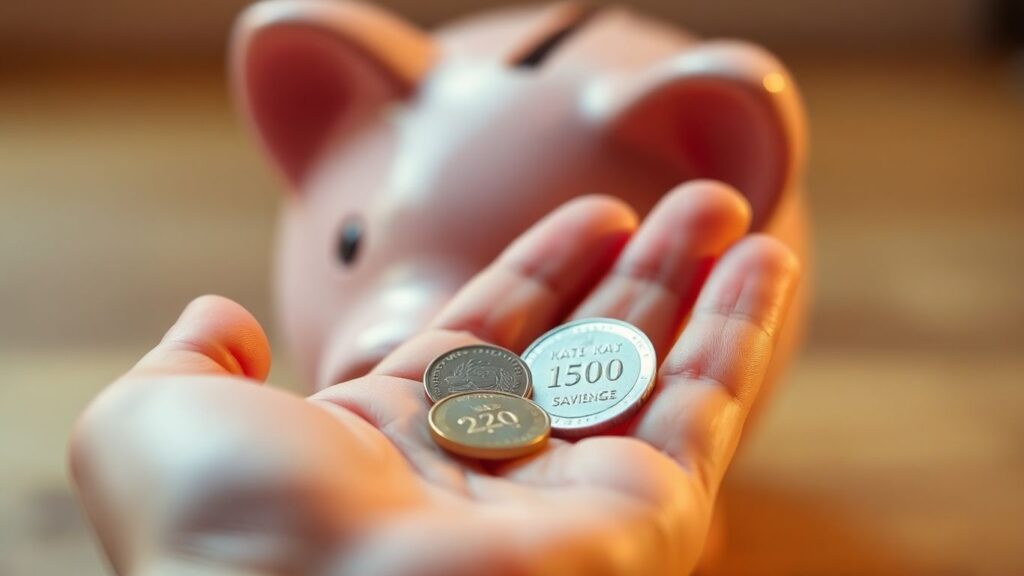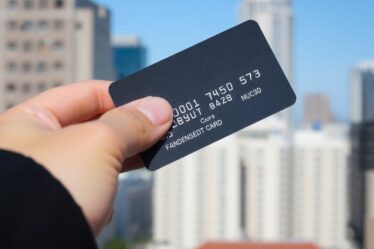
Getting a handle on your money doesn’t have to be complicated. You might think saving money is tough, but it’s often about building small habits that add up over time. This isn’t about drastic changes; it’s about smart, simple steps. Good Financial Education means knowing these steps and actually using them. Let’s look at five easy things you can start doing today to make your money work better for you.
Key Takeaways
- Know where your money goes by tracking every expense, whether by hand, spreadsheet, or app. This helps spot areas where you can cut back.
- Implement the 48-hour rule for non-essential purchases. Waiting two days gives you time to think if you really need it, preventing impulse buys.
- Make saving automatic by ’rounding up’ transactions. Small amounts saved consistently add up for bigger goals.
- Be a smart shopper by looking for sales and buying secondhand. You can get what you need without paying full price.
- Build and maintain good credit. A better credit score means lower interest rates on loans, saving you money in the long run.
1. Track Your Spending

Okay, let’s talk about where your money actually goes. It sounds super basic, right? But honestly, most people don’t really know. You can’t fix what you don’t understand. So, the first step to getting a handle on your finances is to actually see your spending habits laid out. It’s not about judging yourself; it’s about getting the facts.
There are a few ways to do this, and none of them are rocket science. You could grab a simple notebook and jot down every single purchase. Coffee? Write it down. That impulse buy at the checkout? Yep, write it down. Or, if you’re more of a digital person, there are tons of apps out there that can link to your bank accounts and do the tracking for you. Some people like using spreadsheets, which gives you a lot of control over how you see the data. Pick whatever feels least painful.
Here’s a quick look at some common spending categories:
- Food: Groceries, dining out, coffee shops.
- Housing: Rent/mortgage, utilities, property taxes.
- Transportation: Gas, car payments, public transit, ride-sharing.
- Entertainment: Movies, streaming services, hobbies, going out.
- Personal Care: Haircuts, toiletries, gym memberships.
Once you start seeing it all, you might be surprised. Maybe you’re spending way more on takeout than you thought, or that subscription service you forgot about is still draining your account. It’s all about identifying those leaks so you can plug them.
Seeing where your money goes is the first step to making it work for you instead of against you. It’s like getting a map before you start a road trip – you need to know your starting point to plan your route.
2. Round Up To Save Up

This is one of those habits that sounds almost too simple to work, but it really does. The idea behind rounding up is to save the spare change from your everyday purchases. Think about it: if you buy a coffee for $3.50, you can mentally (or actually) round that up to $4.00 and put that extra fifty cents aside. Over time, those small amounts really start to add up.
This method is fantastic because it automates savings without demanding major lifestyle changes. You’re not drastically cutting back on things you enjoy; you’re just letting the small bits of money that might otherwise get lost in your wallet or forgotten go towards a goal. Many banking apps now offer a feature where they’ll automatically round up your transactions to the nearest dollar and transfer the difference to your savings account. It’s a pretty neat way to build up a cushion without even really noticing it.
Here’s how it can work in practice:
- Transaction: You buy groceries for $72.30.
- Round Up: The amount rounds up to $73.00.
- Savings Transfer: $0.70 is automatically moved to your savings.
This approach is great for building up funds for short-term goals, like a vacation or a new gadget, or even just to boost your emergency fund. It’s a gentle way to get into the habit of saving, and you can check out how automated savings can work for you.
The key is consistency. Even though the amounts are small, making this a regular habit means your savings will grow steadily. Don’t get discouraged if it doesn’t seem like a lot at first. Give it a few weeks, and you’ll likely be surprised at how much you’ve accumulated.
3. Use The 48-Hour Rule
Ever see something and just have to have it right then and there? That’s an impulse buy, and they can really mess with your savings goals. A super simple way to fight back against these urges is the 48-hour rule. Basically, if you want to buy something that isn’t a planned necessity, you just wait 48 hours before you actually buy it. That’s two whole days.
Think about it. That shiny new gadget or that trendy piece of clothing might seem amazing in the store or online, but after a couple of days, you might realize you don’t really need it, or maybe you find a better deal elsewhere. This little pause gives your brain time to catch up with your wallet. It stops you from making those spur-of-the-moment decisions that you later regret.
Here’s how it works in practice:
- See something you want? Make a note of it, maybe snap a picture.
- Resist the urge to buy immediately. Put it out of your mind for a bit.
- Wait 48 hours. During this time, think about whether you truly need it, if it fits your budget, and if there are cheaper alternatives.
- After 48 hours, decide. If you still really want it and it makes sense financially, then go for it. If not, you’ve just saved yourself some money without even trying too hard.
This habit is especially helpful for bigger purchases, like electronics or furniture, but it works for smaller things too, like that extra coffee or impulse online shopping spree. It’s a powerful tool for cutting down on unnecessary spending and keeping more cash in your pocket.
This simple waiting period helps you distinguish between genuine needs and fleeting wants. It’s not about deprivation; it’s about making conscious choices with your money instead of letting impulse dictate your spending habits.
4. Shop Sales And Resale
You don’t have to pay full price for everything, you know. Hitting up the sale racks, especially at the end of a season, can really save you some cash. It’s a smart way to stock up on basics that you’ll wear next year without breaking the bank. Think about buying classic pieces that won’t go out of style in a few months.
Shopping secondhand is another fantastic way to save. Thrift stores, consignment shops, and online marketplaces are treasure troves for gently used items. You can find some amazing deals on clothing, furniture, and even electronics. It’s all about patience and knowing where to look. For instance, certain categories like sneakers, vintage clothing, and collectibles are known for their fast turnover and potential for good returns in the resale market.
Here are a few tips for successful sale and resale shopping:
- Plan ahead: Know what you need before you start shopping. This helps avoid impulse buys.
- Inspect items carefully: Check for any damage, stains, or missing parts before purchasing.
- Compare prices: Even on sale items, it’s good to have an idea of the original price to know if it’s a true bargain.
- Consider the cost-per-wear: A slightly more expensive item that you’ll wear often is a better deal than a cheap item you only wear once.
Buying secondhand isn’t just good for your wallet; it’s also a more sustainable choice. You’re giving items a new life and reducing waste. It’s a win-win situation for everyone involved.
Don’t forget to check out resources for popular resale items to get an idea of what’s in demand. It can give you a head start on finding those great deals.
5. Establish And Improve Your Credit
Okay, so let’s talk about credit. It might not seem like a direct way to save money right now, but trust me, it totally is. Think of your credit score as your financial report card. A good score means lenders see you as less of a risk, and that translates into lower interest rates on things like car loans or mortgages. That can save you thousands over the life of a loan.
So, how do you get started or make yours better? It’s not rocket science.
- Pay your bills on time, every time. Seriously, this is the biggest one. Late payments really hurt your score.
- Keep your credit card balances low. Try not to use more than 30% of your available credit limit. It shows you’re not overextended.
- Don’t open a bunch of new accounts at once. Each application can cause a small dip in your score.
- Check your credit report regularly. You can get a free one each year from the main credit bureaus. Look for any mistakes and dispute them if you find any.
Building good credit takes time, but it’s a really solid habit to get into for your future self. It opens doors to better financial opportunities down the road.
Building and maintaining good credit isn’t just about borrowing money; it’s about showing lenders you’re responsible. This responsibility can lead to better terms on loans, saving you a significant amount of money over time.
Keep It Going!
So there you have it – five simple ways to start saving more money, starting right now. It might feel a little weird at first, like trying to learn a new dance step, but honestly, these habits are pretty straightforward. Just give them a shot, see how they feel, and don’t get discouraged if it’s not perfect immediately. The big thing is just to start. Over time, these small changes really add up, and before you know it, you’ll be feeling a lot better about where your money is going. You’ve got this!
Frequently Asked Questions
Why is tracking my spending important?
Knowing where your money goes is super important. It helps you see if you’re spending too much on things you don’t really need. Once you know, you can cut back on those things and save more cash.
How does the 48-hour rule help me save money?
The 48-hour rule means you wait two days before buying something you want on impulse. This gives you time to think if you really need it. Often, you’ll realize you don’t, and you’ll save yourself some money!
What does ’round up to save up’ mean?
It’s a simple trick! When you buy something, you can round the price up to the nearest dollar and put the extra change into savings. For example, if something costs $4.50, you can put $0.50 into savings. It adds up without you even noticing!
How can shopping sales help me save money?
Shopping when things are on sale or buying from resale shops means you pay less for items. You can get the things you need or want without spending as much, leaving more money for other goals.
Why is building good credit important for saving money?
Having good credit means you can get better deals on big things like cars or houses. Lenders will give you lower interest rates, which means you’ll pay less money over time. It’s like getting a discount on future big purchases.
How quickly can I see results from these money habits?
It takes a little time for new habits to feel natural, maybe a few weeks or months. But if you stick with them, you’ll start to see your savings grow and your money situation get better by the end of the year.



